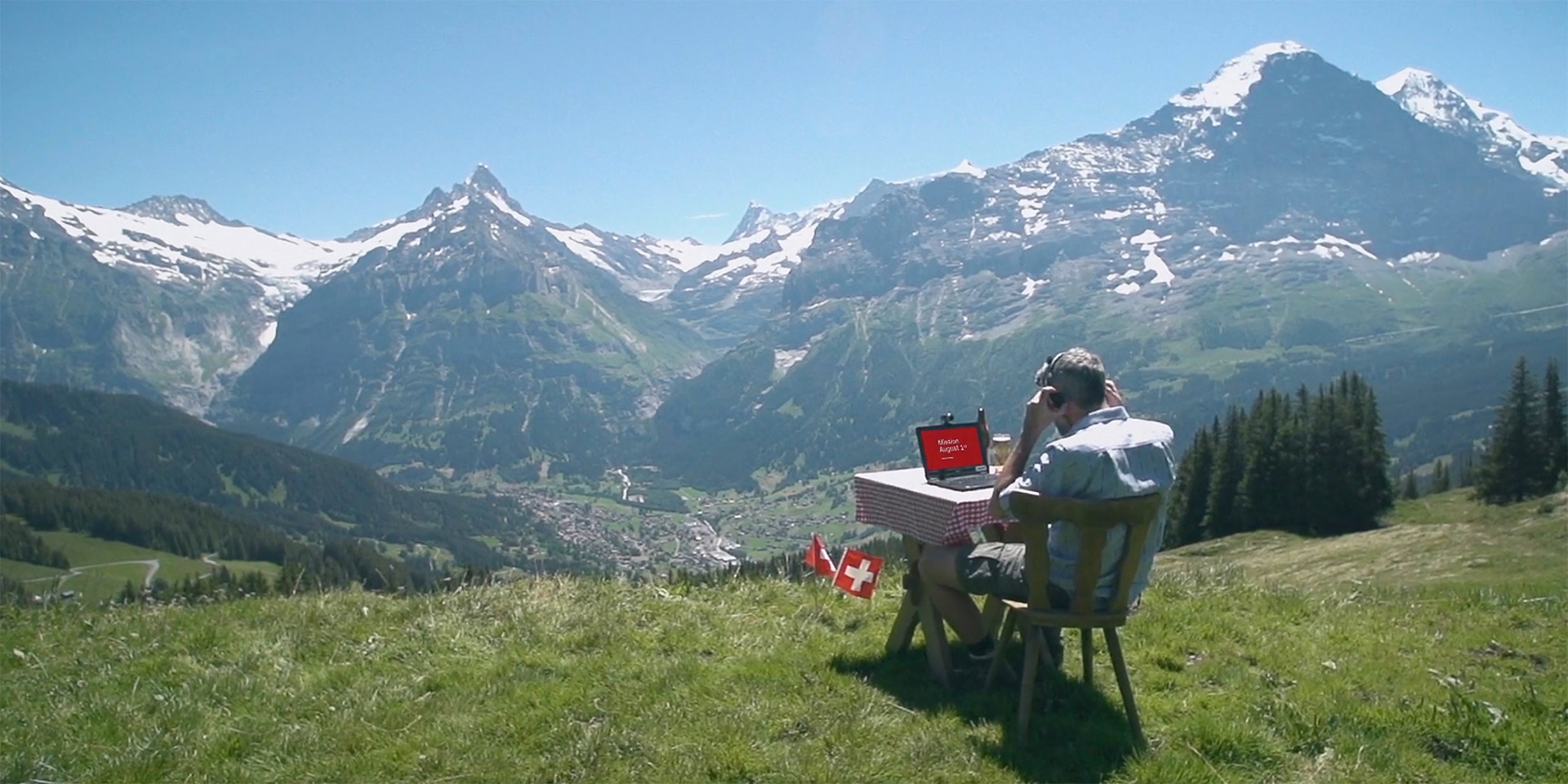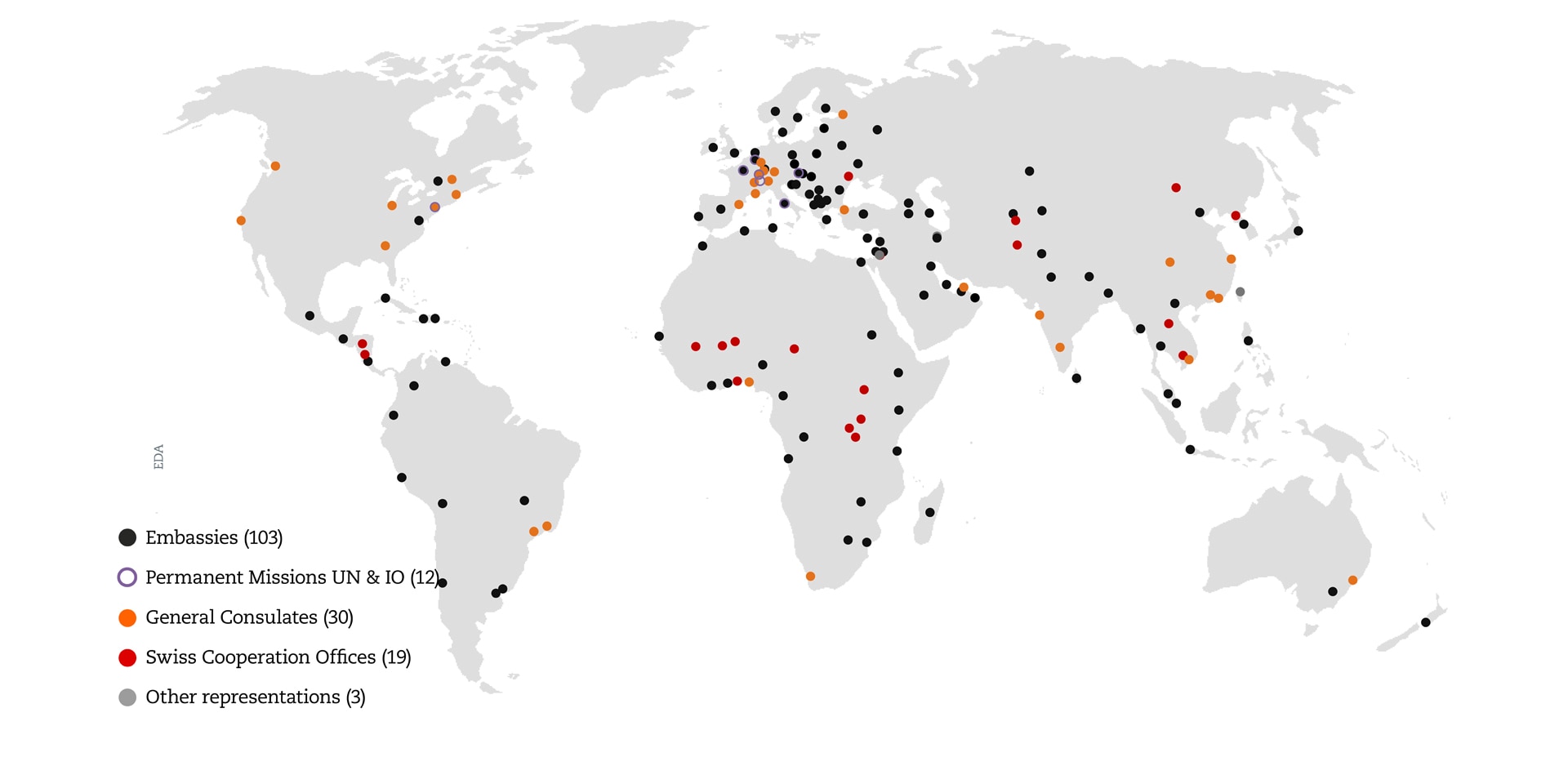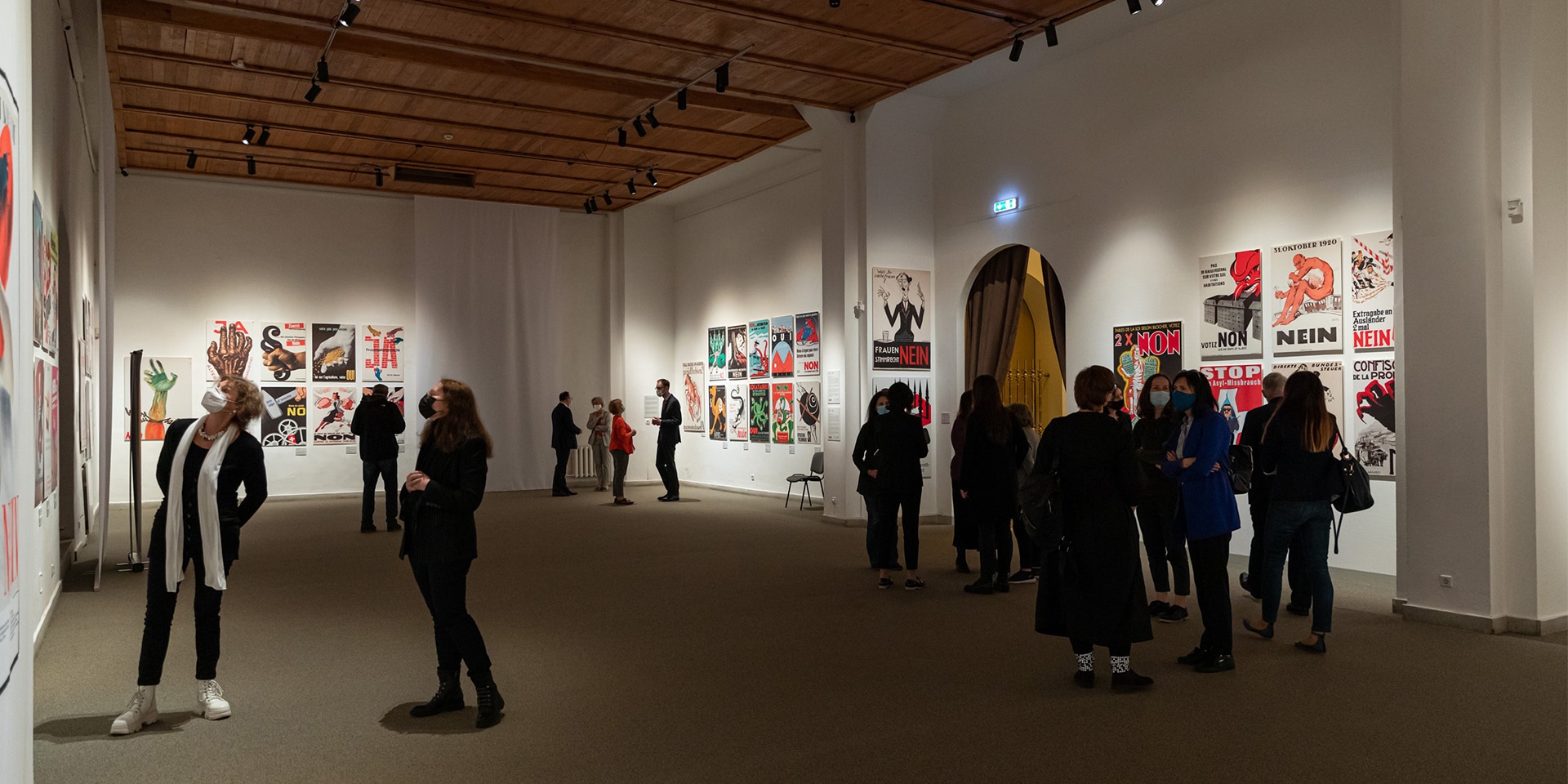Six stories to mark 60 years of Swiss–Australian diplomatic relations
On 5 September 2021 Switzerland and Australia celebrate 60 years of diplomatic relations, as well as their enduring friendship. One of the oldest surviving civilisations in the world, cutting-edge Swiss technology, cultural exchanges, scientific cooperation, acclaimed wines, and a patch of the Australian natural world in Switzerland are the subject of six emblematic stories to mark the 60th anniversary of Swiss-Australian diplomatic relations.
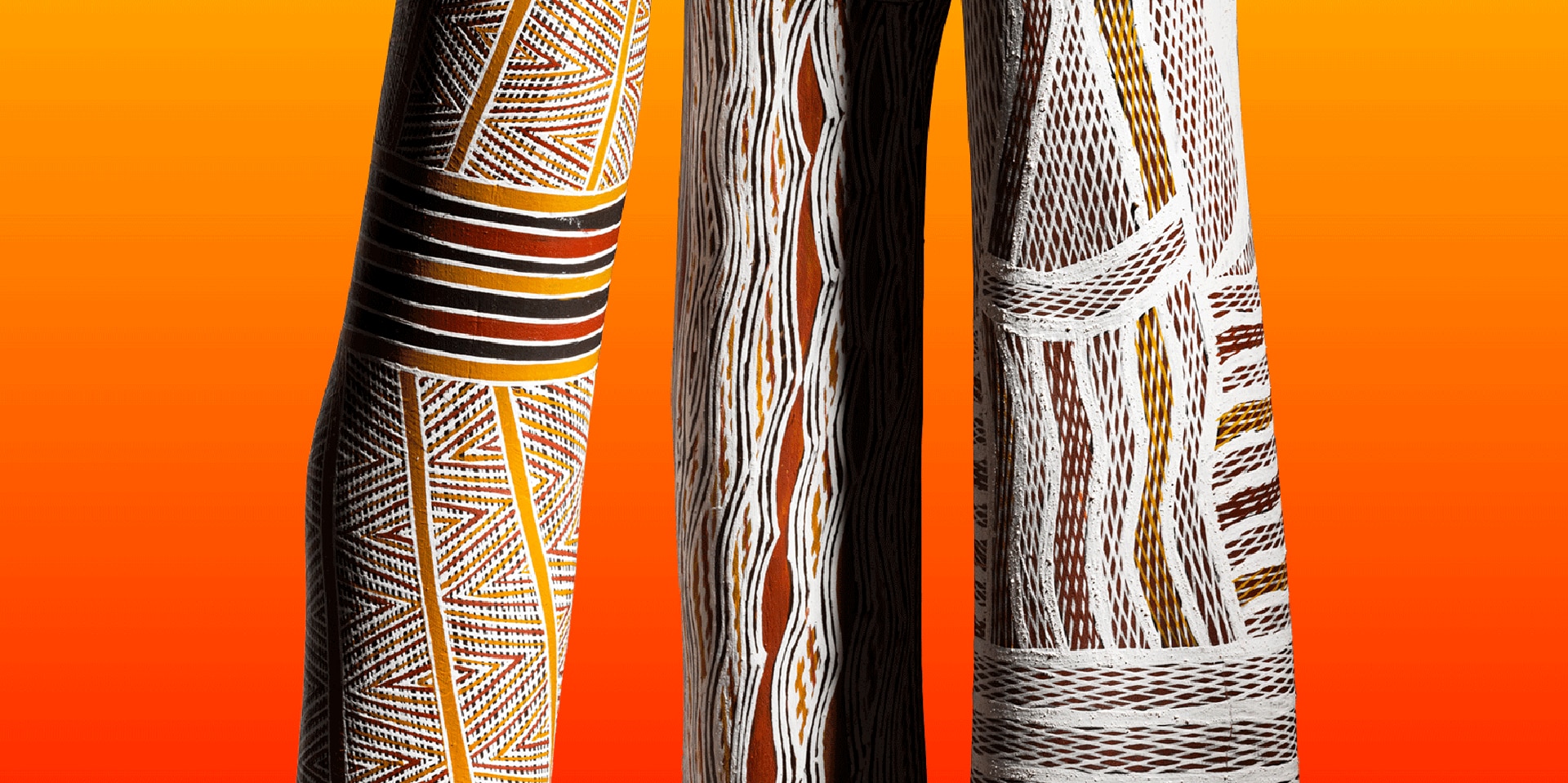
Breath of Life (Lens/Crans-Montana): the first major exhibition in Europe to explore one of the world's oldest surviving civilisations. © V. Dufournier | Forme Sion
Yidaki is what the Aboriginal people call the musical instrument traditionally crafted from termite hollowed eucalyptus trees. It was later given the onomatopoeic name of didgeridoo and has since become a symbol of Australia. The Fondation Opale in Lens/Crans-Montana took on the challenge of exhibiting sound. The result is Breath of Life, an exhibition featuring more than 100 works and a remarkable collection of 70 instruments. As well as being the first major exhibition on the culture of the first peoples of Australia to be staged in Europe, Breath of Life reflects the vibrant cultural exchanges that Switzerland and Australia enjoy. This fascinating exhibition would not have been possible without the valuable input of Australian artists and scholars, who also lent their expertise to an exhibition in Canberra on the same subject.
Facts and figures: Culture and history
- The Bernese Oberland hosted an international yidaki festival in 1996.
- John Webber, born Johann Wäber, was the official artist on James Cook's third expedition to circumnavigate the globe (1776–80). His drawings brought the South Pacific into the collective European imagination.
- Two Swiss immigrants, Henry Tardent and Heinrich Spoendlin, made significant contributions to the drafting of the Australian Constitution. They are regarded as the fathers of the country's mandatory referendum for constitutional changes and the double majority rule.
The Australian REGA
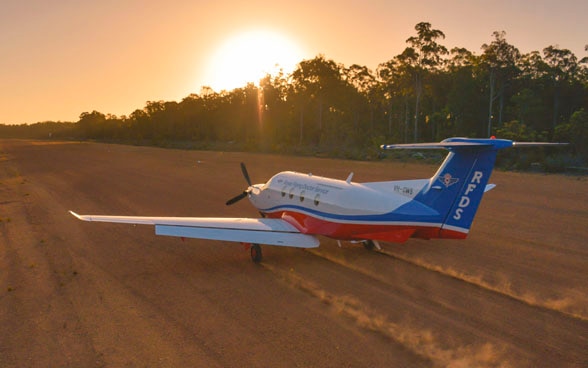
There are reports of an accident in the Australian outback. People are hurt and require urgent attention. Unfortunately, the nearest hospital is hundreds of kilometres away. There is only one solution: medical evacuation by air. It takes a special kind of aircraft to perform such an operation. Not only must it be capable of covering long distances in a short space of time, it must also be able to land and take off on the outback's short, dusty runways. This is why the Royal Flying Doctors Service (RFDS) rely on Swiss-built planes for these lifesaving missions. In 1994 the RFDS took delivery of its first Pilatus PC-12, a propeller plane that can withstand the harsh conditions of the Australian outback. It also recently added the PC-24 to its fleet. Unlike other jets, the PC-24 can land and take off on short dirt strips. The RFDS is not the only Australian organisation that swears by Swiss aviation technology. The Roulettes, the famous Australian aerial acrobatics team, fly a PC-21, while the skills of every single fighter pilot in Australia have been put to the test on the Swiss-built Pilatus trainer aircraft.
Facts and figures: Trade and economic ties
- Trade between Switzerland and Australia is brisk and has grown by more than 25% in the last five years.
- Trade Point Australia works on behalf of Switzerland Global Enterprise (S-GE) to promote the Swiss export industry. It is based in the Consulate General of Switzerland in Sydney.
- Swiss Cham has more than 200 active members, making it one of the largest chambers of commerce in Australia.
Sydney Opera House and the Swiss connection
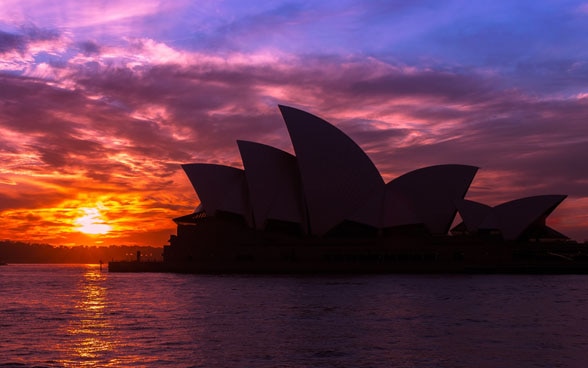
As building work was about to begin on the Sydney Opera House, Jørn Utzon, the architect behind the winning design, wrote to Le Corbusier in 1958 to ask if the world renowned architect from Neuchâtel would be willing to make a contribution to the project in the form of "decoration, carpets and paintings". Le Corbusier agreed. He designed a tapestry 'Les Dés sont jetés' (the die is cast) and sent it to Utzon. Despite a few twists and turns along the way, the art work finally reached Sydney in 2015. Today, the tapestry hangs in the west wing of the Opera House. The Swiss connection does not end there. The two Swiss architects Sergio Buzzolini and Hansruedi Isele were involved in the construction. Finally, Noëmi Stadelmann, the internationally acclaimed opera singer from Zurich, is married to the artistic director of the Opera Australia, Lyndon Terracini. The soprano and baritone first met when they performed together in The Marriage of Figaro.
Facts and figures: Arts and culture
- In 2019, holiday visitors from Australia spent close to 400,000 nights in Switzerland. This is 77% more overnight stays than in 2009 and an all-time high. However, Switzerland's message to potential visitors this year remains 'Dream now, travel later'.
- Around 26,000 Swiss nationals are registered with the Consulate General of Switzerland, making it the sixth largest in the world. The Consulate General opened in Sydney in 1855.
- Sydney is home to the Australian Angel, a sculpture by artist Bernhard Luginbühl which Switzerland gifted to the city on the occasion of 2000 Summer Olympics.
- Between 1998 and 2018, Martina Hingis, Roger Federer and Stanislas Wawrinka won a total of 10 Australian Open titles and were firm favourites with tennis fans Down Under.
Cooperation spurs research success
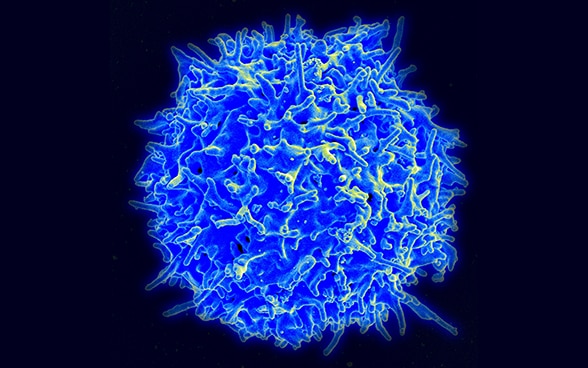
When Rolf Zinkernagel was a young intern at the University of Lausanne, he sent out 50 or so applications in the hope of landing a job as an immunology researcher. As many as 30 of his letters went unanswered. In the end, the Australian National University (ANU) in Canberra offered the young doctoral student from Basel – and future Nobel laureate – a research post. There, he shared a laboratory with Australian scientist Peter Doherty. The two got talking and decided to embark on a joint research project. In 1973 they published the findings of their research on how the immune system recognises virus-infected cells. However, the groundbreaking nature of their discovery was not instantly acknowledged. The two men were finally awarded the Noble Prize for Physiology or Medicine in 1996. Achievements like are only possible if the necessary conditions are in place. This is why Switzerland fosters close cooperation with Australia in the fields of education and research. In 2020 Switzerland and Australia signed an agreement that will provide Swiss scientists with better access to Antarctica and strengthen cooperation between the two countries on international climate change research.
Facts and figures: Education & research
- Scientific cooperation continues to go from strength to strength. There are now over 150 cooperation agreements between Swiss and Australian higher education institutions.
- Over 550 scientific cooperation projects have benefited from Swiss National Science Foundation support since 2011.
- According to a list published by the Australian Research Council, Switzerland is among the country's top 10 education and research partners.
Australian winemakers with Swiss names
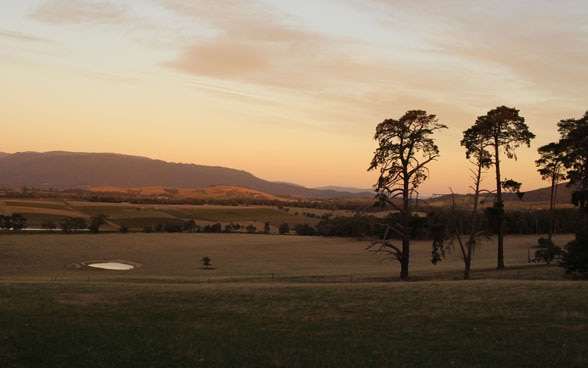
Sophie de Montmollin and Charles La Trobe married in Bern in 1835. She came from one of Neuchâtel's patrician families. He was a British government official, who had previously worked for Sophie's family as a personal tutor. They had been living in the hills overlooking Lake Biel for four years when Charles was appointed superintendent of a district in Australia, which included the city of Melbourne. In 1839 the couple and their daughter set sail for Australia. Sophie was a prolific letter writer, sending accounts of her new life to her family in Neuchâtel with unfailing regularity. Given her well-connected background, Neuchâtel's winegrowing families, with names like de Pury, de Castella, Leuben and de Meuron, soon learnt of this corner of Australia. Before long, their eldest sons headed out to found their own wine estates in the new land. This was the first major wave of Swiss immigration to Australia. Many of the vineyards established by these winemakers have since disappeared. However, there are few Australian families with distinctively Neuchâtel names who continue to produce acclaimed wines today.
Facts and figures: The Swiss community in Australia
- Australia is the 10th largest exporter of wine to Switzerland.
- Swiss Alliance Australia Inc., the umbrella organisation of Swiss associations, was founded in 2021. There are six Swiss associations and nearly 30 affiliated interest groups in Australia.
- First came the French-speaking winemakers, then the Italian-speaking gold prospectors. They were followed by German-speaking farmers. Australia is one of the most popular non-European countries for Swiss people to emigrate to.
The first Swiss-born koala
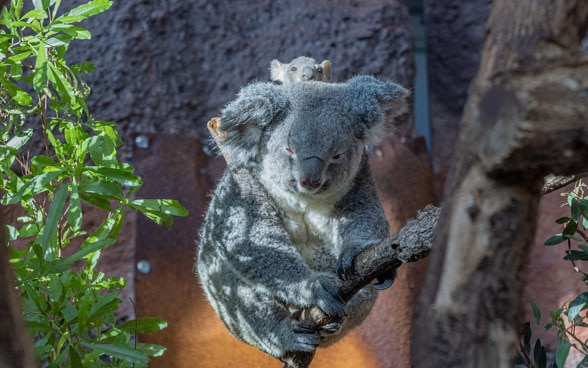
Zurich Zoo offers visitors a glimpse into Australia's fascinating flora and fauna. Among the residents of the Australia compound are koalas, the first of which were brought to Zurich with the assistance of the Swiss embassy in Canberra. The newcomers were affectionately referred to as Australia's ambassadors to Switzerland. The over 5,550m2 compound also includes Australia House, which is home to an exhibition ('Vom Nützling zum Schädling') detailing the destructive impact of introduced species on the country's native ecosystem. The Swiss embassy in the Australian capital also cares deeply about invasive species management. Part of the gardens have been painstakingly restored and replanted with native Australian species.
Facts and figures: Nature and the environment
- Australia is the driest inhabited continent on Earth and the sixth largest country in the world.
- Australia has some of the richest biodiversity on Earth. It is home to over one million plant and animal species that occur nowhere else in the world.
- Australia uses building, waste management, mobility and hydropower technologies from Switzerland to fulfil its sustainable development ambitions.

